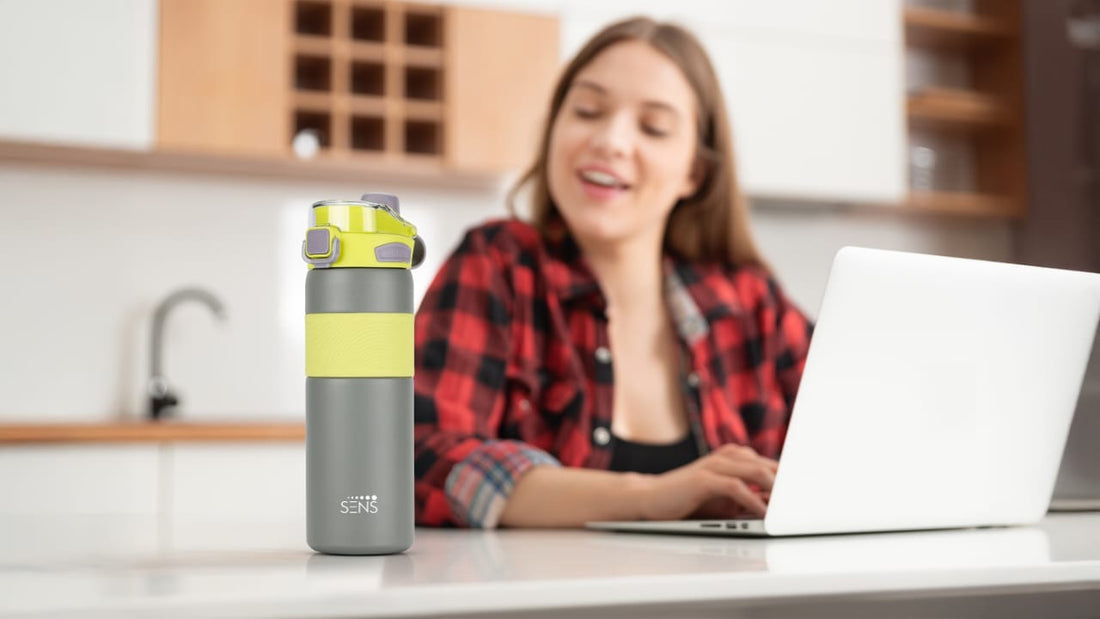
Are You Making These Mistakes with Your Reusable Water Bottle?
Reusable water bottles are fantastic for hydration and the environment, but it's easy to fall into habits that make them less effective or even unhygienic. Here are some common mistakes people make with their reusable water bottles:
1. Not cleaning it often enough (or properly): This is probably the biggest mistake! Your water bottle, even if only filled with water, can become a breeding ground for bacteria and mold.
- Mistake: Rinsing with just water or not washing it daily.
- Why it's a mistake: Saliva, environmental microbes, and residual moisture create a perfect environment for bacteria like Staphylococcus and Streptococcus, and even E. coli if hands aren't washed. Mold can also grow, especially in damp areas.
- Best Practice:
- Daily Wash: Wash your bottle with warm, soapy water after each use, especially if you're drinking anything other than plain water (like sugary drinks, coffee, or protein shakes, which accelerate microbial growth).
- Thorough Scrub: Use a bottle brush to reach all interior surfaces, including the lid, mouthpiece, and any removable parts like straws and rubber seals. These crevices are hotspots for bacteria and mold.
- Air Dry Completely: Always allow your bottle to air dry completely, upside down, with the lid off, before reassembling or storing. Moisture is mold's best friend.
- Deep Clean (Weekly): For a deeper clean, consider using a solution of white vinegar and water (half and half) or baking soda and water. Let it soak overnight, then rinse thoroughly. Some sources also suggest a diluted bleach solution for stainless steel.
2. Using the wrong type of bottle for the situation (especially with plastics):
- Mistake: Reusing single-use plastic bottles, or using plastic bottles in hot environments.
- Why it's a mistake: Single-use plastic bottles (often marked #1 or #2) are not designed for repeated use. They can break down over time, developing microscopic cracks and scratches where bacteria can hide. More importantly, some plastics can leach chemicals like BPA (Bisphenol A) or antimony, especially when exposed to heat (like in a hot car or direct sunlight). BPA is an endocrine disruptor linked to various health concerns.
- Best Practice:
- Choose the Right Material: Opt for reusable bottles made from glass, stainless steel, or BPA-free plastics.
- Avoid Heat with Plastic: Never expose plastic bottles to high temperatures (e.g., leaving them in a hot car, microwaving, or washing with very hot water if not designed for it).
- Inspect for Wear: If you have a plastic bottle, regularly inspect it for cracks, dents, or signs of wear and tear. If found, it's time to replace it.
3. Not disassembling all parts for cleaning:
- Mistake: Only washing the main body of the bottle and not taking apart the lid, straw, and seals.
- Why it's a mistake: These small parts and hidden crevices are prime locations for moisture and residue to accumulate, leading to bacterial and mold growth that you might not even see.
- Best Practice: Always disassemble your bottle completely. Remove the lid, straw, and any rubber gaskets or seals. Wash each piece thoroughly.
4. Filling with sugary drinks or other liquids without proper cleaning:
- Mistake: Using your water bottle for juice, sports drinks, coffee, or protein shakes and then just rinsing it out.
- Why it's a mistake: Sugars and other nutrients in these beverages provide a feast for microbes, leading to rapid bacterial and mold growth and potentially unpleasant odors or tastes.
- Best Practice: If you use your bottle for anything other than plain water, wash it immediately and thoroughly after use. Consider having separate bottles for water and other beverages.
5. Storing it incorrectly:
- Mistake: Storing a wet bottle with the lid tightly sealed.
- Why it's a mistake: This traps moisture inside, creating a humid environment perfect for microbial growth and funky smells.
- Best Practice: Always store your clean, dry bottle with the lid off or ajar to allow for airflow.
6. Not replacing old or damaged bottles:
- Mistake: Continuing to use a bottle that's visibly damaged, scratched, or has a persistent odor.
- Why it's a mistake: Cracks and scratches can harbor bacteria, and a persistent odor usually indicates microbial growth that's hard to get rid of.
- Best Practice: Replace your reusable water bottle when it shows significant signs of wear and tear, or if you can't get rid of a lingering smell or sliminess.
By avoiding these common mistakes, you can ensure your reusable water bottle stays a safe, hygienic, and eco-friendly way to stay hydrated!
